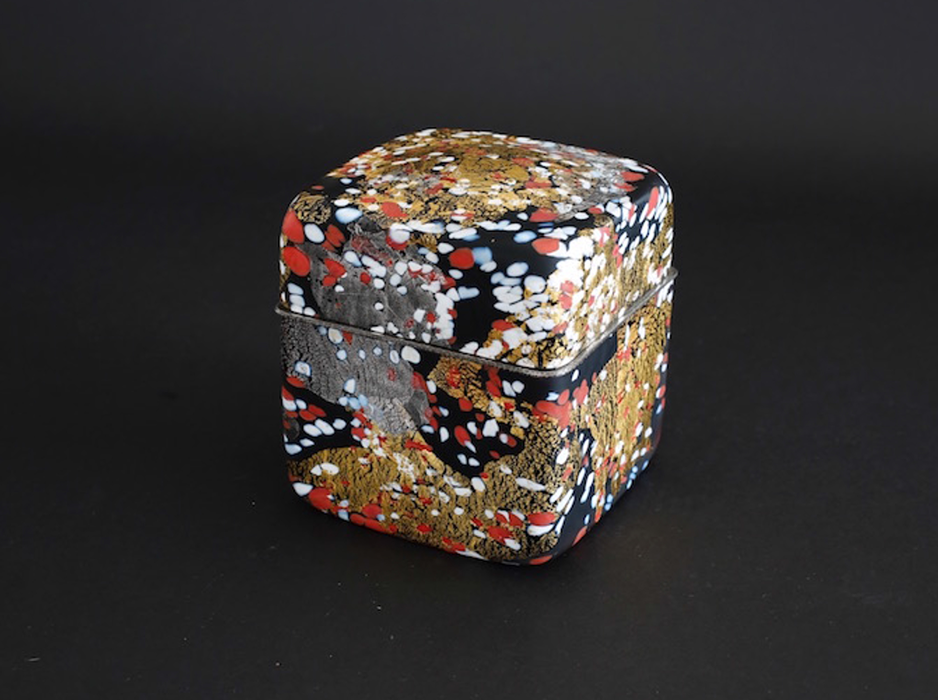
飾筥 紅白梅 W12.5cm D12.5cm H15.0cm


飾筥 紅白梅 W12.5cm D12.5cm H15.0cm
Kyohei Fujita
In 1921, Kyohei Fujita was born in Hyakuninchou, Shinjuku ward,Tokyo.Always having wanted to be an artist since he was little, he entered the Department of Crafts-Metal Carving, Faculty of Fine Arts, Tokyo Fine Arts School (currently Tokyo University of the Arts).At that time, he had been learning a lot of artistic knowledge and skills, encountering Rimpa which became an important motif of his works later. Especially it was so meaningful for him to see the glass work of Sassanian Persia at Seisouin exhibition. He had decided to live as a glass crafts artist because he was admired by the unbelievable brightness of the glass made 1000 years ago.
After the graduation,1974, he started to work at Iwata glass Manufacturing(currently Iwata glass Crafts). The founder, Iwata Toushichi was the leading person contributing to the development of the glass crafts. Fujita worked as a craftsman while learning the basic skills of it.However, Fujita wanted a career as an artist rather than as a craftsman so he left the job and he became independent after one and half year. Fujita showed the brand new style how to set up by himself as an independent glass crafts artist while borrowing a furnace and creating works inspired by his own ideas even though it was normal for the artists to create works during working at manufactures. However, in Japan, it was hard to make a living by free creation activities under the recovery from WWⅡ. Fujita made daily stuff and use its sales for the next works.
After that, he had gradually attended a fame as a glass artist thorough group exhibitions and loads of personal ones mainly at departmeht stores. In 1964, he released “Kousai”(Rainbow Colours) which was made by his original skill “fluid glass”.It is said that Fujita had a confidence from bottom of his heart for the first time by this masterpiece in which he succeed to make a moment when the fluid glass gets cold and hard. In 1973, his another masterpiece, “Decorative casket Shoubu”(iris) was displayed at the 13th personal exhibition. Fujita expressed the respect to RIMPA with dainty colors and drawings, gorgeous decorations such as gold and platinum leaves on the colored box. It inherits the goal of Japanese arts, RIMPA, and it was acclaimed all over the world as the work expressed by the glass which is used daily in every country.
Since 1977, Fujita had moved to Murano Island, Venice, Italy. His sense was inspired a lot by meeting energetic Venetian glass craftsmen. Fujita created the original forms and patterns by his originality during using “Kanna”(the traditional glass decorating skill).Thus, Fujita ,he had made the numerous works including Venice vase, he had been going back and forth Venice and Japan while improving his skills and he lived his all life as a glass crafts artist.